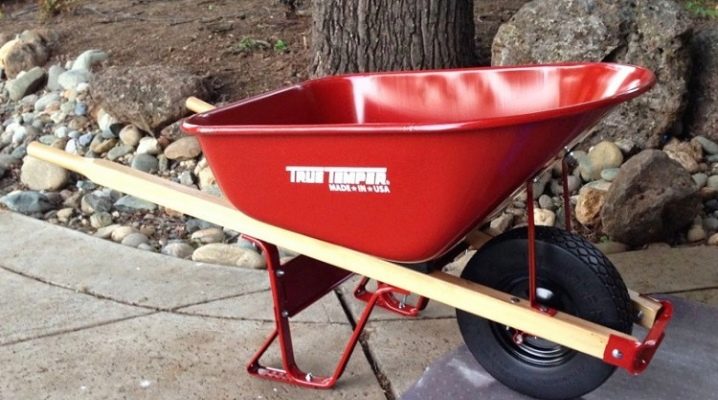Features, benefits and recommendations for choosing pneumatic wheels
The demand for pneumatic wheels is growing every year, the demand is explained by their high performance and reasonable price, as well as a wide range of applications. They do not weigh down the structure and provide good maneuverability. Pneumatic wheelbarrow wheels have many advantages over traditional rubber counterparts, including:
- indicative depreciation;
- ease of movement;
- rolling resistance on uneven surfaces.
- They can be matched to industrial large wheelbarrows and small garden carts. You can do this in our online store, if necessary, contact a consultant, he will not allow you to make a mistake.
Regardless of the characteristics of the selected product, the product will be characterized by all the described advantages.Pneumatic wheels are undoubtedly comfortable and reliable, as the tire is inflated with compressed air, which softens shocks and absorbs stress.

Details on the scope
Feel free to consider pneumatic wheels and supports if you need new moving parts for warehouse, production and agricultural wheelbarrows, as well as structures for transporting building materials and debris. There are wide, medium and narrow models, adapted for:
- manual two-wheeled structures for warehouses;
- garden wheelbarrows;
- garbage containers;
- shop equipment;
- road construction equipment;
- wheelbarrows for gas cylinders;
- harvesting agricultural machinery.
In our company, you can select wheels for any application.
Are there any disadvantages?
Pneumatic wheels belong to the group of inflatable models, and they are not known to have high cut resistance. In the event of a puncture, the equipment will lose its functionality. This disadvantage is faced by those who use wheelbarrows on rough, bumpy roads. When operating on a flat surface, there will be no problems.
Do tires need to be changed in case of puncture? No, they need to be repaired. Carry out vulcanization, in simple words - gluing. It is also possible to replace it with a rubber camera. Repairs are inexpensive but time-consuming, so it is best to use mobile equipment as intended and avoid surfaces with piercing and cutting elements.
Plastic discs or analogs of sheet fabric are the basis of pneumatic wheels. Each variety has its own advantages and disadvantages. Steel wheels are classified into:
- collapsible;
- cast;
- galvanized;
- protected by polymeric materials.
- A special coating provides resistance to adverse external influences, prevents corrosion.
It is worth making a choice in favor of wheels with polypropylene disks for the following reason: lack of interaction with alkaline, acidic, saline substances. They are quite strong and durable, and also do not conduct electricity. Recommended for small trolleys for light loads.
Analogs with metal discs are an excellent choice for oversized wheelbarrows used to transport heavy objects. Their main plus is high carrying capacity, minus is the price.

Analysis of design features
The structure of pneumatic wheels is multilayer. The more coatings, the higher the protection against punctures and cuts. If there are no piercing-cutting elements, then they can be used indoors and outdoors. The material of the tires is characterized by elasticity, which provides resistance to low and high temperatures (-30 - +50 ° C).
The contact layer is one of the building blocks of pneumatic wheels. It is a tire with a rigid but resilient shell containing air with a nipple (2–7 bar). Thanks to the contact layer, during the operation of the trolleys, there is no sliding and oscillation on uneven surfaces. Other structural elements: bracket (fixed or swivel), ball or roller bearings.

Subtleties of purchase
What are the first things to look for when choosing pneumatic wheels? Look at quality and price. For the production of inexpensive products, cheap components are used. Look at the bearing, it must be of good quality! For example, details 203 and 204 with 17 and 20 mm bore holes deserve attention.
The next important characteristic is tire density. This is the number of layers discussed earlier. Choose products labeled 4PR. They will last longer than analogs consisting of 2 layers, as they have high puncture resistance.
